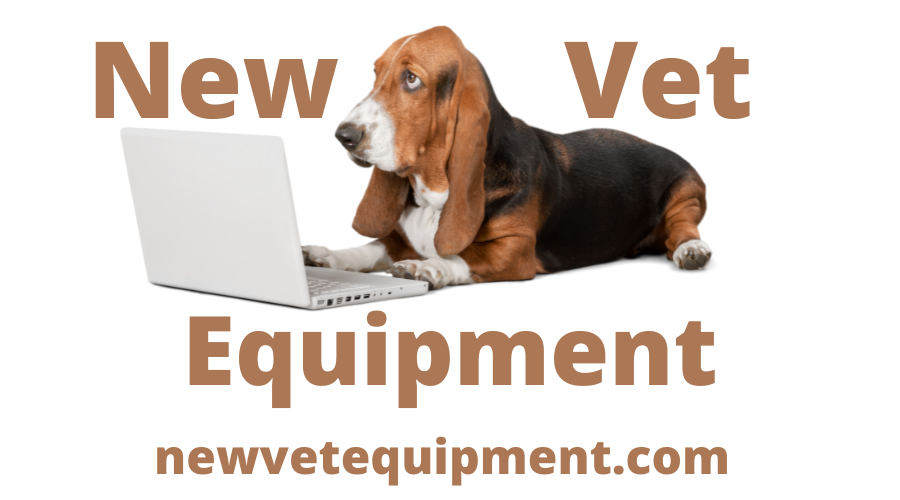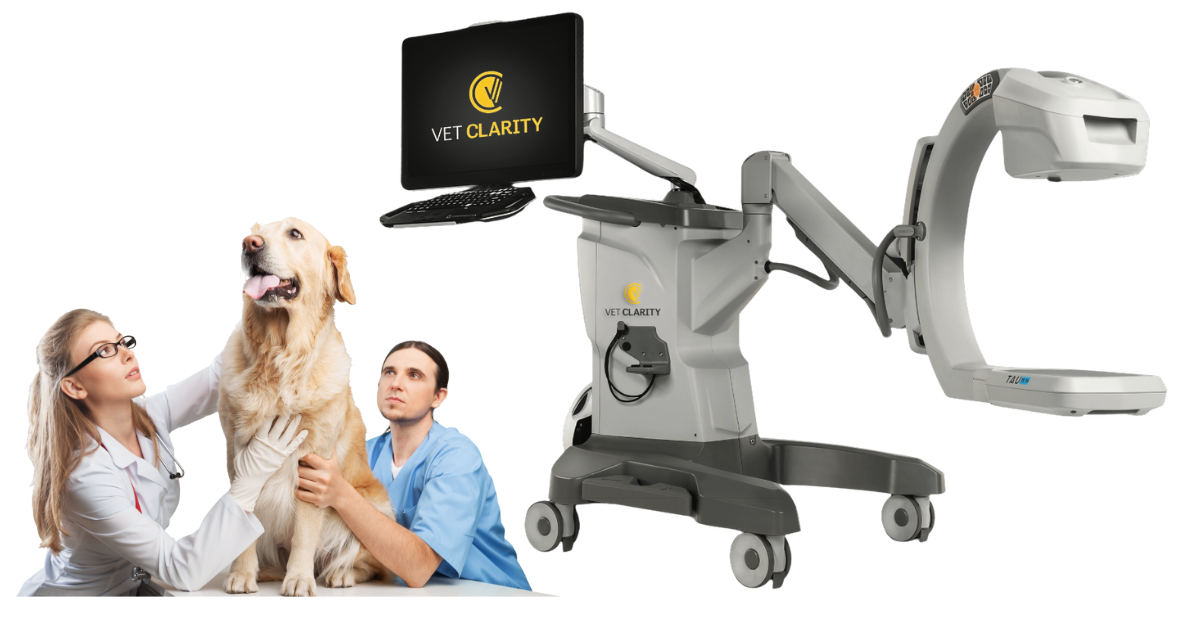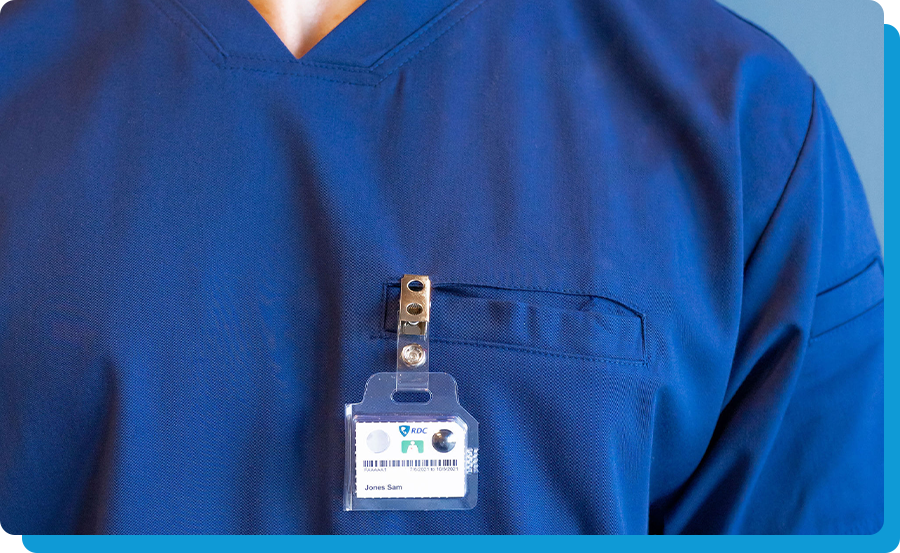Who Needs a C-Arm? A Breakdown of Veterinary Practices That Benefit Most
How C-Arms Improve Outcomes in Modern Veterinary Care
As more veterinary hospitals expand their surgical and interventional capabilities, the question isn’t just “What does a C-arm do?”, it’s “Do we actually need one?”
C-arms provide real-time fluoroscopic imaging that can elevate surgical accuracy, open the door to new procedures, and streamline workflows. But like any major equipment purchase, they’re most valuable for practices that can truly utilize them.
If you’re trying to determine whether a C-arm fits your caseload and growth plans, this guide breaks down which hospitals benefit most.
1. Orthopedic-Focused General Practices
If your hospital performs a high volume of orthopedic procedures, a C-arm can quickly become indispensable.
Orthopedic benefit:
Real-time visualization during fracture repairs
Precision alignment for TPLOs and other corrective osteotomies
Ability to confirm implant placement instantly
Fewer retakes, fewer anesthesia adjustments, and fewer post-op surprises
In orthopedics, a few millimeters can make the difference between a smooth recovery and a complication. Fluoroscopy reduces guesswork and increases surgical confidence.
Common Cases Include:
TPLO and TTA procedures
Long bone fracture repair
Luxating patella corrections requiring implant placement
Angular limb deformity corrections
Joint evaluations
For surgical GPs looking to elevate their ortho offerings or reduce their reliance on referral hospitals, a C-arm can be a turning point for clinical capability.
2. Specialty Hospitals
Specialty practices tend to see the broadest range of cases in which fluoroscopy improves outcomes. Their higher caseload also spreads the cost across more procedures, making ROI easier to calculate.
Specialty benefits:
High surgical volume
Advanced ortho, soft tissue, and neurological procedures
Interventional radiology availability
On-site specialists who rely on real-time imaging
Common Cases Include:
Complex fracture repairs
Vascular and cardiac procedures
Tracheal stent placement
Pacemaker implantation
Subtotal colectomy foreign body checks
Urethral and ureteral stenting
For these hospitals, a C-arm isn’t just helpful, it’s often a clinical requirement.
3. Emergency & Critical Care Hospitals
ER/ICU environments regularly encounter cases where fluoroscopy changes the course of treatment within minutes.
ER / ICU benefit:
Ability to identify and remove GI foreign bodies rapidly
Real-time visualization for unstable orthopedic injuries
Support for urgent cardiac or vascular interventions
Faster decision-making when minutes matter
Common Cases Include:
GI foreign body retrieval (particularly linear objects)
Urethral obstruction diagnostics
Fracture stabilization
Pericardiocentesis guidance
Contrast-based urinary or vascular studies
In ER settings, a C-arm reduces delays, minimizes patient movement, and improves efficiency during high-acuity cases.
4. Mobile Surgeons and Traveling Specialists
Mobile surgical teams often work with varying setups and caseloads, so easy positioning and real-time imaging can drastically improve workflow consistency across clinics.
Mobile/Travel benefit:
Standardized imaging, no matter where they operate
More predictable surgical efficiency
Ability to offer specialized procedures to general practices
Mobile surgeons offering TPLOs, fracture repair, or interventional procedures often rely on a C-arm to maintain high standards across diverse environments.
Understanding DSA: When Digital Subtraction Angiography Matters
Some C-arm systems include DSA (Digital Subtraction Angiography)—a powerful imaging tool that reveals blood flow with exceptional clarity.
What DSA Does (in simple terms)?
DSA subtracts pre-contrast images from post-contrast images to highlight only the motion of contrast material. In practice, it produces obvious vascular images in which bones and soft tissue are “subtracted out.”
When Veterinary Practices Use It:
Diagnostic vascular studies
Portosystemic shunt (PSS) identification
Cardiac pacemaker lead visualization
Fluoroscopy-guided biopsies where vasculature is a concern
Why DSA Matters:
Reveals tiny vessels that are difficult to see with standard fluoroscopy
Improves safety in contrast-guided procedures
Enhances accuracy for vascular interventions and catheter placement
While DSA isn’t necessary for every hospital, it’s a significant advantage for practices performing advanced imaging or interventional radiology.
How to Estimate Your C-Arm Utilization Before Purchasing
Before investing, assess your current and potential case volume.
Ask yourself:
1. How many orthopedic procedures do we perform monthly?
Even 4–6 orthopedic surgeries per month can justify consistent use.
2. Are we seeing frequent foreign bodies or emergency cases?
If so, fluoroscopy may significantly shorten procedure times.
3. Are we looking to add new services?
TPLOs, TTAs, stent placements, and interventional radiology are all enabled or improved by C-arms.
4. Do we refer cases out that we’d prefer to keep in-house?
Keeping one or two high-value procedures per month can substantially improve ROI.
5. Are there specialists (or mobile surgeons) in our network who could use the equipment?
Shared utilization can strengthen financial justification.
Does Your Practice Need a C-Arm?
If your hospital is performing regular orthopedic or emergency procedures—or plans to expand into these services—there’s a strong chance a C-arm will elevate both clinical capability and practice profitability.
But even more importantly, it enhances veterinarians' ability to diagnose and treat challenging cases, giving teams the confidence and clarity they need to deliver exceptional care.
Proving ROI: Making the Case for In-House Veterinary Imaging
Investing in new imaging equipment, whether it's a digital X-ray system, dental X-ray, or ultrasound, can feel like a big leap. The price tag is upfront and very real… but so is the return when the equipment is used effectively.
The challenge can be convincing everyone else on your team of their value.
The good news: in-house imaging is one of the easiest investments to justify when you know which metrics to measure.
Let’s break down the key numbers that actually matter and how to present them so your team understands and supports them.
1. Start With Imaging Volume
Most practices use imaging more often than they realize.
But because they’re outsourcing cases or relying on outdated equipment, they underestimate the number of opportunities available to them.
What to measure:
How many X-rays or ultrasounds do you currently perform each month
How many do you refer out
How many cases do you skip altogether because of logistics, client cost, or scheduling limitations
A practical example:
Let’s say a 3-doctor practice:
Takes ~70 in-house X-rays/month
Refers out 20+ imaging cases/month
Has an estimated 10–15 “missed opportunities” where imaging would have helped, but wasn’t pursued
That’s 100+ cases per month that a modern digital X-ray system or ultrasound system could capture.
If your average imaging fee is $150–$250, that’s:
$15,000–$25,000 per month in potential revenue.
Even if you estimate conservatively, you can quickly show that the equipment pays for itself—often in less than a year.
2. Case Conversion Rate: The Metric Nobody Talks About
You’ve probably seen this… when imaging is easy, fast, and available right now, more clients say “yes.”
When imaging requires a referral, a second trip, or more money upfront… fewer clients say yes.
What to measure:
Percent of recommended imaging that clients accept today
The percent you expect once imaging is same-day and in-house
Some practices that started offering same-day digital X-rays increased their acceptance rate from 43% to 78% in the first 3 months.
Why? When imaging is immediate, convenient, and clearly explained, clients see the value.
This means:
More complete diagnostics
More accurate treatment plans
More revenue per visit
Better medical outcomes—your team will care about this point as much as the financials.
Increasing your case conversion rate by even 15–20% can add thousands in monthly revenue without adding any new clients.
3. Referral Retention
Referrals aren’t bad by any means; you often need specialists.
But referring out basic imaging is one of the biggest hidden drains on revenue.
What to measure:
How many imaging referrals do you send out monthly
Average cost clients pay externally
Percent of referred clients who don’t return for follow-up care
Missed procedure revenue because the patient went to another hospital
If you refer out 20–30 ultrasounds per month at ~$300 each, that’s $6,000–$9,000 monthly handed to another practice.
Keeping even half those cases in-house often justifies the cost of a mid-range ultrasound system or DR panel on its own.
4. Cost Avoidance
Sometimes, it’s not about the revenue you gain but the expenses you stop paying.
What to measure:
Outsourcing fees (radiographs, dental films, ultrasounds)
Additional sedation or handling charges caused by slow equipment
Time cost from workflow delays
The cost of retakes with outdated systems
A practice relying on outdated or low-resolution ultrasound equipment might:
Spend 15–20 extra minutes per scan due to slow boot-up times, poor image acquisition, or difficult navigation
Require additional restraint or sedation for anxious or painful patients because older probes take longer to capture clear images
Delay treatment decisions while waiting for images to be reviewed, re-taken, or sent out for interpretation
Upgrading to an ultrasound system can save:
10+ hours/month of staff time through faster image acquisition and streamlined workflows
5–10 sedation or heavy restraint events by reducing scan times and improving patient comfort
Countless repeat scans and workflow disruptions, thanks to enhanced image quality and intuitive controls
That’s real money saved, even before you consider the revenue side.
Putting It All Together
Most veterinary practices already have the patient volume to justify in-house imaging; they haven’t measured it yet. When you break down the numbers, the ROI becomes obvious:
More case conversions
Higher client satisfaction
Better patient outcomes
Faster workflows and a rapidly recouped investment
If you’re preparing to make the case to your team, this framework gives you everything you need to build confidence and get buy-in.
Radiation Safety Tools Every Veterinary Clinic Needs
Protecting the Heart of Your Practice: Veterinary Radiation Safety Essentials
Running a busy veterinary practice means balancing patient care, client satisfaction, and staff safety—just the tip of the iceberg.
When your practice offers diagnostic imaging like X-rays or dental radiography, radiation safety becomes a non-negotiable priority. It protects your team and helps you stay compliant with regulations. The good news: with the right shielding, protocols, and monitoring tools, maintaining a safe, compliant environment is straightforward.
Why Radiation Safety Matters in Veterinary Practices
When you’re around imaging tools frequently, it’s easy to let the risks of intermittent exposure fade into the background. Diagnostic imaging enables faster, more accurate diagnoses—but repeated exposure to even low doses can accumulate over time. Protecting your staff (and yourself) from unnecessary exposure safeguards the people who make your practice possible and keeps you aligned with regulatory requirements.
Shielding: The First Line of Defense
Proper radiation shielding prevents stray radiation from traveling beyond its intended area. Most clinics install lead-lined walls, windows, and doors within imaging rooms.
The Physicist Shielding Report is invaluable. A qualified medical physicist evaluates your layout, workload, and imaging equipment to calculate required shielding location and thickness, ensuring you are both compliant and well protected.
Key benefits of a Physicist Shielding Report:
- Confirms your clinic meets applicable state and federal requirements.
- Reduces long-term liability by documenting protective measures.
- Provides peace of mind that staff, clients, and adjacent areas are protected.
Timing matters: commission the shielding report before installing new X-ray or CT equipment. Designing the room correctly from the start avoids costly retrofits and delays.
Monitoring Exposure: The Role of Dosimeter Badges
Shielding alone isn’t enough—verification is critical. Dosimeter badge services track the cumulative radiation dose your staff receives. Team members wear badges during work and submit them for regular analysis. The results confirm your protocols are effective and provide documentation for inspections.
Why dosimeter badges are essential:
- Early detection of overexposure so you can intervene quickly.
- Reliable documentation for regulatory compliance and audits.
- Visible commitment that reinforces a culture of safety.
Building a Culture of Safety in Your Practice
Radiation safety starts at the top. When owners and managers model best practices—wearing lead aprons and gloves, using thyroid collars, and properly wearing badges—it sends a clear message: this matters. Your team will mirror what they see.
Practical tips to strengthen safety culture:
- Post clear signage and positioning diagrams in imaging areas.
- Hold annual training refreshers—make them engaging or even gamified.
- Maintain a log of dosimeter readings and follow up on outliers.
- Schedule periodic reviews with a qualified medical physicist.
- Recognize and reward consistent compliance and good habits.
Regularly review your procedures and update them as guidelines or technologies evolve.
Make Safety Simple
Radiation safety isn’t just a compliance checkbox—it protects the heart of your practice: your people. With correct shielding, ongoing exposure monitoring, and consistent training, you’ll create a safe, efficient environment where staff and patients thrive.
Veterinary X-ray Cost: How Much To Charge for X-rays?
What to charge for digital X-rays
Pricing strategies can be challenging. But when appropriately managed, pricing can help the clinic meet its bottom line while also keeping clients happy.
Here are some things to consider when determining veterinary digital radiography costs…
Calculate Your Cost Per Radiograph or Study
This involves the sum total of many different factors, including…
The cost of your radiography equipment. Include the total monthly payment on the x-ray system if you financed it, as well as any service plan, software, or other ongoing payments.
If it’s easier, break down the monthly cost into weekly amounts or any increment that tells you how much income the equipment needs to bring in per day or per week.
Staffing costs. How many team members are needed per radiographic study? And how long are studies expected to take? This should give you a rough idea of the staff costs per study. Allow some margin of error for reshoots, as well as a bit of a learning curve in the beginning.
It would also be good to budget for team training. Any new piece of veterinary equipment (even a user-friendly one) requires time for people to build familiarity and maximize efficiency. While training requires an up-front time and cost investment, it will likely promote efficiency and maximize equipment usage and ROI in the long term.
Lost income opportunities. This is where things start to get a bit more complicated. It can help to work with a business professional, especially one familiar with veterinary medicine.
Opportunities lost basically means that during the time your team is performing radiographs, they are unable to do anything else, such as take in appointments. So, perhaps fewer appointments can be scheduled, which leads to a loss of income in one area (routine appointments) while gaining in another (x-ray studies).
Overhead costs. Every business needs to pay for its building, utilities, waste management, and other costs of daily operations. More than likely, this is already included as a percentage or markup in many of your products and services. Radiographic studies should also take this into consideration, as it’s a necessary cost of doing business.
For radiographs specifically, this might also factor in patient positioning aids, protective lead aprons and gear for team members, and safety/regulatory compliance such as radiation badges.
How Much Income Will Radiographic Equipment Produce?
Here are a few considerations that may help you come to an expected dollar amount…
How many radiographs does your practice expect to perform per day/week/month? Also, could this number be increased? For example, maybe more studies will be performed after teaching team members how to convey the value of radiographs to clients, or thanks to a new veterinary DR system that improves efficiency and allows for more studies in less time.
What do you expect that clients will pay for a radiographic study? This is based on knowing your area (including factors like cost of living) and your clientele.
Remember, it’s important to factor in a client’s perception of what a service is worth. This is called value-based pricing. For example, some vets note that clients are willing to pay more for emergency services (emergency x-rays) versus routine or preventive care (senior wellness screenings), because the perceived value is higher to them.
If your practice discovers that costs are high compared to what clients will likely pay, it might be necessary to lower costs as much as possible. For example, maybe buying used veterinary equipment would be the best option, so long as it is in good condition.
Learn the going rate in your area. Never discuss prices directly with other clinics, as this can be considered price fixing and run against antitrust laws. However, it’s usually okay to have a team member call and “secret shop” certain prices. If you’re not sure what’s permitted or not, check with a legal professional.
Also, keep in mind whether your practice is focused on high-end service or on offering the best prices relative to other practices in your area. It’s not always an “apples to apples” comparison, even for local competitors.
Consult helpful resources. Many vets refer to AAHA’s Veterinary Fee Reference as a general guideline for pricing services. Keep in mind recommendations must be adjusted to factors at your clinic or your local area. Also, investigate continuing education resources for practice management, which often include pricing strategies. The Veterinary Information Network (VIN) offers practice management courses, and many conferences might also have this specialty available.
Consider Combining Costs When Relevant
Here are some examples for consideration…
Lower prices for each set of additional images. A lot of the up-front cost involves setting up the study. But once the patient is measured and ready to go, additional views generally go faster than the first ones. So, a five-view study might include a set price for the first two views, then a lower cost per view for the next three. Or a GI contrast study—which might involve at least 10 shots—could include decreased costs for such a large number of views, or even be priced as a package deal.
Combine radiographs with other services—such as sedation or surgical procedures—when relevant. A sedated or anesthetized pet is often easier and faster to position for their x-rays.
Bundle other services when appropriate, such as senior wellness checks that include bloodwork and imaging to screen healthy pets.
Adjust Prices as Needed
Pricing strategies can be an art as much as they are a defined calculation. So, it’s important to be adaptable over time. Circumstances might change in your community. And routine price increases are expected in most industries due to the real costs of inflation.
Consult a Business or Financial Professional
This can all get quite complicated. And most veterinarians and team members much prefer working with animals to managing a business.
Professionals exist for a reason, so be sure to use them to your advantage as needed. This could include business consultants, financial professionals, or others relevant to your situation who are familiar with veterinary practices.
Doing some research and using available resources can help a veterinary practice develop the most effective pricing strategy—and balance client expectations with a good ROI on their new veterinary equipment.
Written by: Dr. Tammy Powell, DVM











